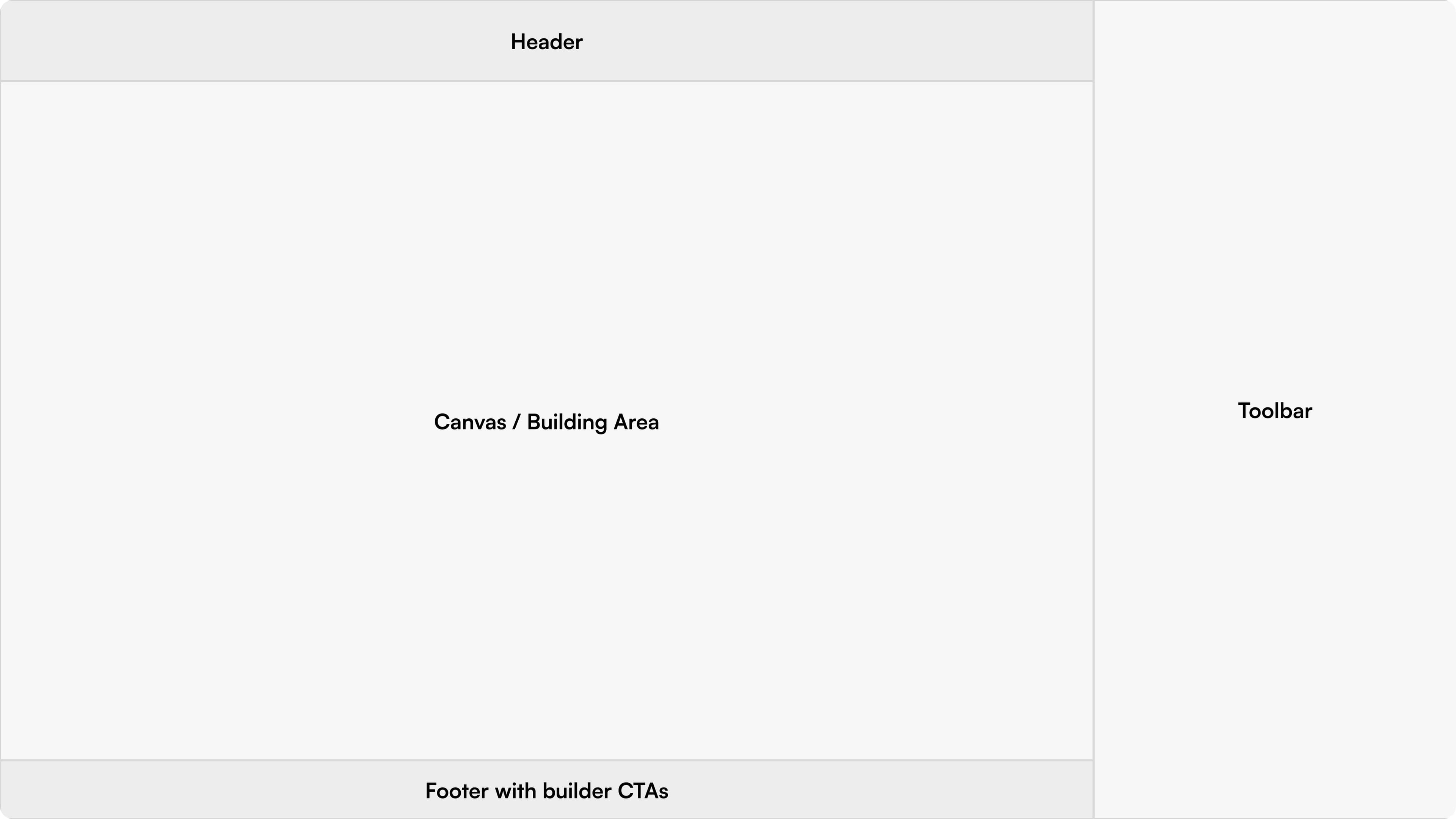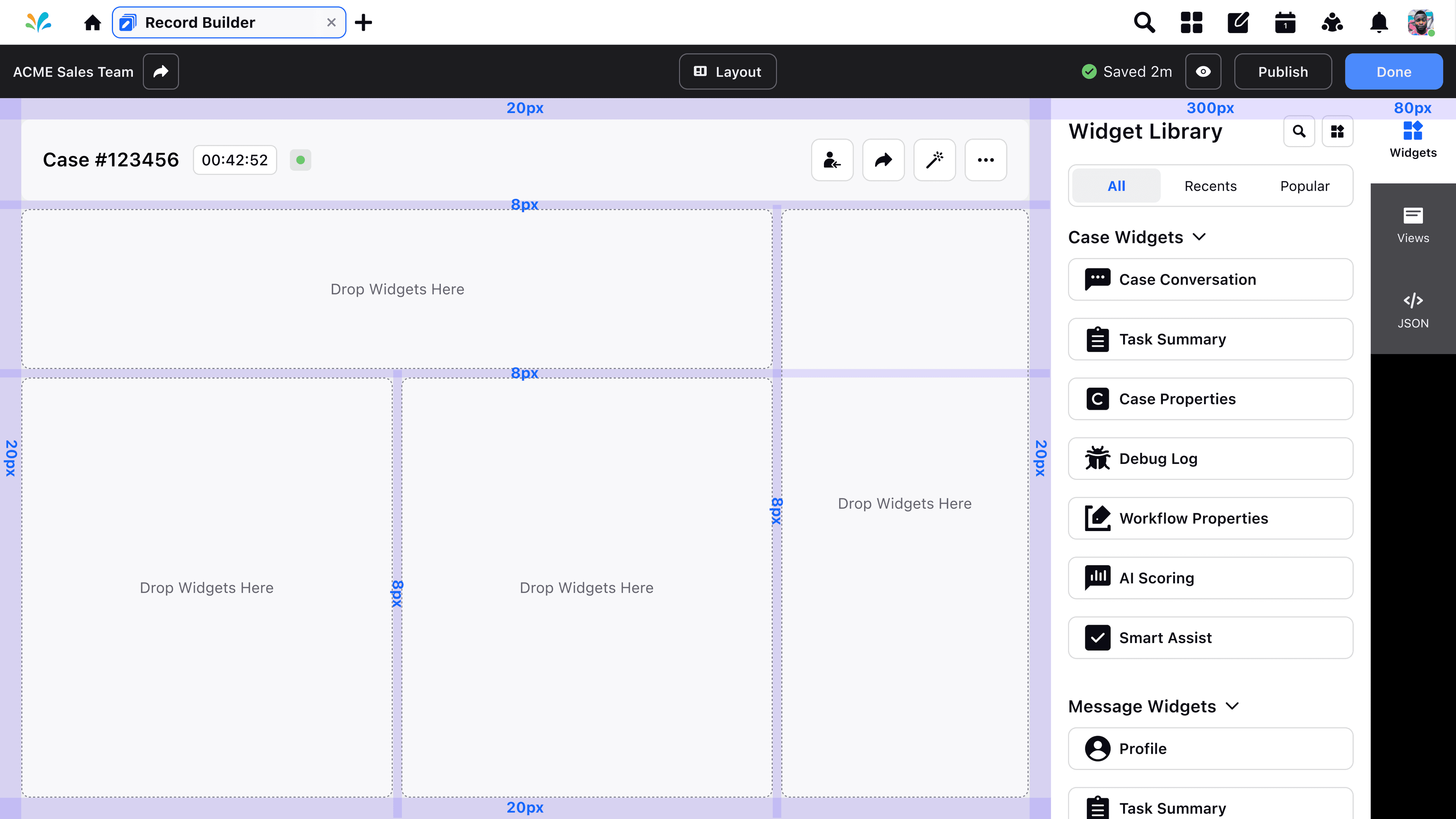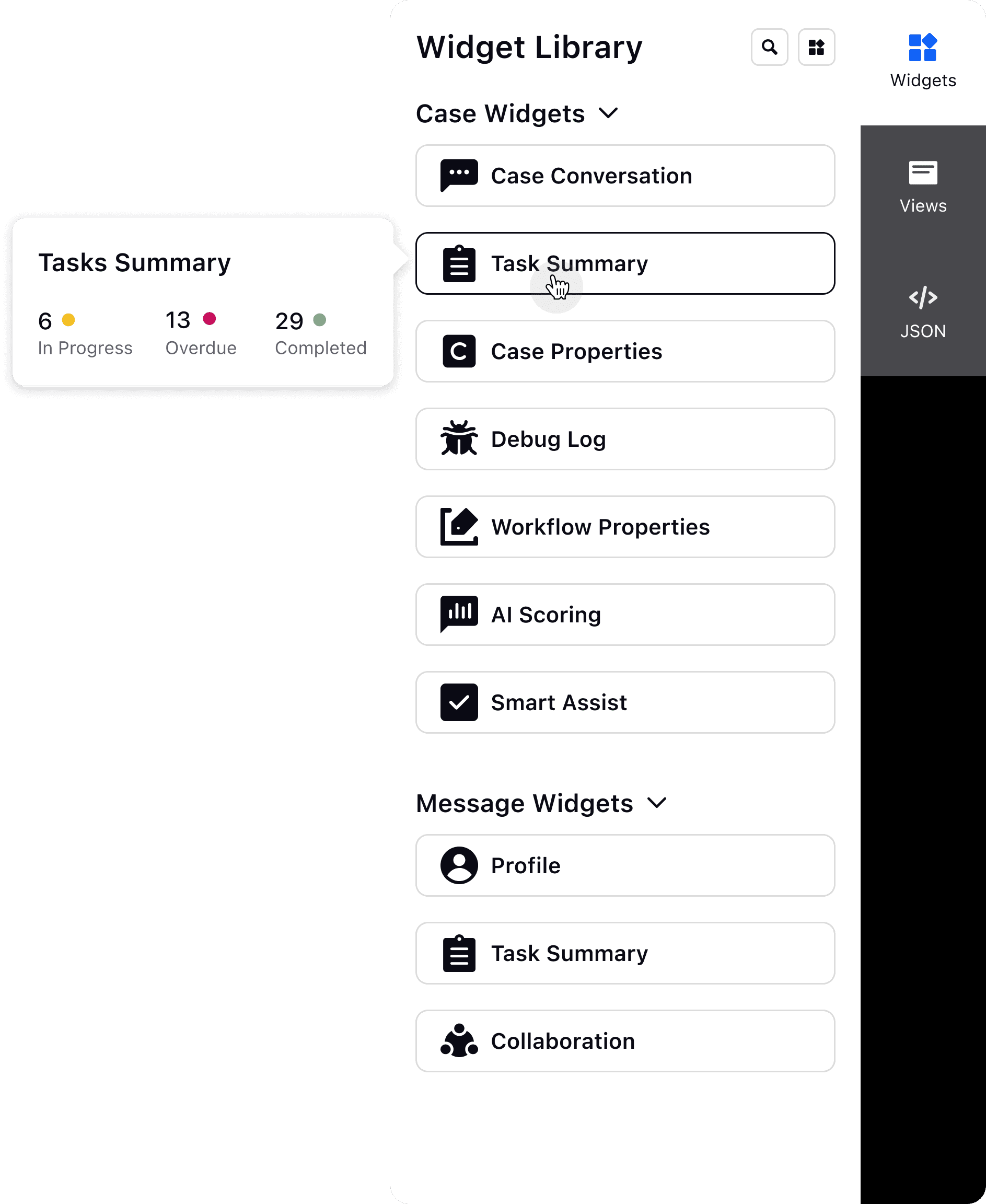- Role: Product Designer
- Timeframe: Nov 7, 2022 – Jan 10, 2023
I redesigned of Sprinklr's Agent Console Builder, a no‑code tool for assembling custom dashboards for customer service agents. The new experience improved adoption, reduced reliance on internal teams for setup, and established design patterns used across other builders.
Problem of accumulated design debt
The Agent Console Builder, a long-standing tool in Sprinklr's ecosystem, had accumulated significant design debt over time. Its outdated interface, unchanged for years, led to 🔻 low adoption rates and 😰 increased reliance on Sprinklr's internal teams for console customization.
Solution
Redesign the builder to make it easy to use for non-technical users (supervisors, in this case) to build custom consoles independently.
Design goals
Key improvements
Simplified layout
Users found the footer to be quite obtrusive, so I simplified the layout by consolidating the header and footer and bringing all the CTAs into the header/topbar.
Bringing relevant tools upfront in default view
Replaced a code editor default with an all‑tools view where the widget library is front and center. This lowers the barrier to entry for non‑technical users.
From list to visual catalog
Transformed the widget list into a visual library with icons and hover previews so supervisors can quickly identify and evaluate components.
New interactions
1. Drag and drop
Add widgets to the canvas with a familiar, direct manipulation pattern.
2. Drag and rearrange
Reorganize layout quickly without modal dialogs or deep menus.
Easier widget exploration
Browse and compare widgets with richer previews to reduce trial‑and‑error.
3. Version history
Auto‑save, review past versions, and distinguish live vs. draft states for safer iteration.
Impact
Takeaways
Legacy feature auditing
I learned to effectively audit legacy features and prioritize improvements by differentiating between must-haves and nice-to-haves.
Building for scale
Working on a wider design initiative that affected all creative builders, I collaborated closely with the Design Systems Manager. This experience taught me how to create robust, scalable components and patterns. Through iterative refinement, I improved these components locally until they met approval standards for broader implementation.






